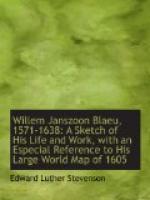|
This section contains 343 words (approx. 2 pages at 300 words per page) |
1570-1629
Dutch Explorer
Willem Jansz, a Dutch sea captain, was the first European to catch sight of Australia. But like another man far more famous for being the first Caucasian to glimpse a continent—Christopher Columbus (1451-1506)—Jansz had no idea what he had found.
Virtually nothing is known about Jansz's life either before or after the point when he played his role in history. His voyage took place in 1605, four years after Holland founded the East India Company for the purpose of exploring and colonizing the East Indies, or modern-day Indonesia and surrounding islands. Jansz's boat, a relatively small craft called the Duifken, had earlier distinguished itself in a sea battle with the Portuguese over control of Java, and on November 28 it sailed from the port of Bantam with orders to explore the southern coast of New Guinea.
Jansz and his crew crossed the Banda Sea to reach southwestern New Guinea at Dolak Island. They then entered what is now known as the Torres Strait before running into shallows leading to the Great Barrier Reef. Fearing that they might run aground, Jansz turned the prow southward, where they again sighted land. Though they thought this was simply another part of New Guinea, in fact what they were seeing was the west coast of the Cape York Peninsula in northeastern Australia—an entirely new continent.
The crew of the Duifken were also the first Europeans to glimpse Australian aborigines—and nine of them were the first to be killed by these natives. Between the hostility of the aborigines and the dryness of the region he saw, Jansz concluded that the land offered no promise for future exploration or trade, and he explained as much to his superiors when he returned to Java. In the years that followed, the Dutch made tentative efforts to explore the continent, which they claimed for their own under the name New Holland. They established so little presence in Australia, however, that it was easy for the British to take control in the eighteenth century.
|
This section contains 343 words (approx. 2 pages at 300 words per page) |


